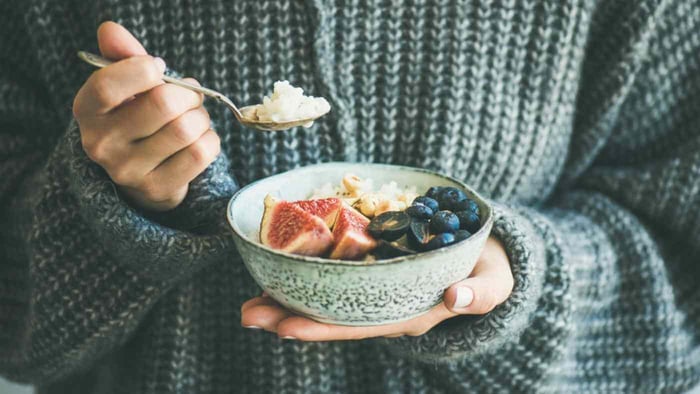Hi are regions of the world where people live longer, healthier, and mostly happier lives. They are called Blue Zones because they are oceanic coastal areas. People in these regions for centuries have tended to live well into their 80s, 90s, and even 100s.
What Is a Blue Zone?

A Blue Zone is an area of the world where people tend to live longer lives due to a healthier lifestyle, physically, and mentally.
The concept of Blue Zones was first identified by demographers Michel Poulain and Gianni Pes in 2004. They found that certain regions of the world had high concentrations of centenarians, or those who live to be 100-plus. Since genetics only accounts for 20–30% of longevity, it wasn’t just luck and good DNA that led them to live so long.
So what was their secret?
As it turns out, environmental factors like diet and lifestyle play a huge role in determining your lifespan. We’ll go into more detail on those later, but first:
Where Are the Blue Zones?

Explorer David Buettner has become one of the world's foremost experts in Blue Zones. He recognized the first Blue Zone in Sardinia, an island off the Italian coast. This mountainous region is home to some of the oldest men in the world. What is also interesting about Sardinia is that the ratio of male to female centenarians is just about even – whereas in other places in the world, there are five women over 100 years of age to every one man.
Later, four other Blue Zones were identified in:
- Okinawa, Japan
- Icaria, Greece
- Nicoya Peninsula, Costa Rica
- Loma Linda, California.
The good news is that you know you don’t have to actually live in a Blue Zone to live the Blue Zone lifestyle. Buettner is now working with several universities and communities to create Blue Zone communities in the United States. The Blue Zone Project has helped reduce obesity and tobacco use, reducing risk factors for diseases and increased life expectancy in cities in Beach Cities, CA; Spencer, IA; Albert Lea, MN; and Fort Worth, TX
What is the Blue Zone Lifestyle?

Researchers found that residents of Blue Zones shared similar diets and lifestyle characteristics. For example, people in the top Blue Zone villages in Sardinia live an agricultural lifestyle and grow and produce much of their own food.
When you are eating mostly what you have grown, your diet doesn’t include much in the way of processed foods. It also helps them lead a healthy lifestyle as farming life comes with daily exercise.
Other characteristics of the Blue Zone lifestyle include a focus on family and community. Elders are valued members of society, and church is an important part of each community. They also don’t smoke or use tobacco.
The Power 9

When studying the other Blue Zones, researchers found shared traits that seemed to help contribute to longer lives. These were dubbed the Power 9 and focus on the right outlook, eating wisely, connecting, and moving.
The Power 9 includes:
- Diet. 95% plant-based with emphasis on vegetables, legumes, whole grains, nuts, and fish, and follow the 80% rule like the Okinawans: stop eating when you feel 80% full.
- Fasting. Like reducing caloric intake, periodic fasting is beneficial for health and has been shown to reduce blood pressure, cholesterol and other risks for chronic disease. Fasting is a common practice in some religions, like Greek Orthodox Christians.
- Limited alcohol. Studies on the effects of alcohol are mixed but drinking red wine, which contains antioxidants, which contribute to longevity, is common in several Blue Zone areas, including Sardinia and the Icarian area of Greece.
- Exercise. People in Blue Zone areas tend to have exercise built into their lives. Rather than hitting the gym after a sedentary day at the office, residents of Blue Zones get their steps in by gardening, raising farm animals, walking, and preparing meals.
- Sleep. Not enough can be said about the power of naps. And sleeping until you wake up naturally, rather than depending on an alarm. A 30-minute daytime nap, or “siesta” is common in many Blue Zone areas—and can reduce heart disease and lead to a longer life.
- Spiritual or religious practice. The sense of connection people in Blue Zones get from their spiritual or religious community can reduce depression.
- Multi-generational families. People in Blue Zones often have multi-generational households, with grandparents living with their grandchildren, which contributes to a longer life.
- A sense of purpose. Called “ikigai” in Okinawa or “plan de vida” in Nicoya, this can extend your life and give you a sense of psychological well-being.
- Healthy social network. The company you keep can influence your health and lifespan as well. If smoking and obesity are generally accepted, those can cut your life short.
What is the Blue Zone Diet?

To start eating a Blue Zone diet, reduce your intake of the following:
- Meat. Stick to once a week and adjust your portion size to about two ounces—about half or less of what you might consider a normal portion size.
- Dairy and eggs. Skip the full-fat cows-milk and go for plant-based options. Limit eggs to two to four times a week, one at a time, as part of a meal instead of the main protein.
- Sugar. Forget about sodas and other sugar-laden processed foods. Residents in Blue Zones eat a fifth of the sugar that most North Americans do. Vastly reduce your sugar intake and save it for your favorite sweet treat on special occasions.
Increase your intake of these Blue Zone foods:
- Legumes. From lentils to pinto beans, Blue Zones often eat a Mediterranean diet that includes lots of legumes. Try replacing chicken with chickpeas in soups, salads and stir frys.
- Dark, leafy greens. Swiss chard, kale, spinach are all packed with vitamins A and C and a good source of antioxidants. Have them in salads and smoothies to get full serving every day.
- Olive oil. With such a delicious, all-purpose choice that’s good for you, why would you choose to cook with anything else?
- Nuts. Full of heart-healthy unsaturated fats, nuts are also high-fiber and can lower your cholesterol. Keep portions small as they are also calorie-dense.
- Steel-cut oatmeal. The least-processed type of oatmeal, choose versions with no added sugar and you’ll have a delicious, filling, high-fiber, high-protein breakfast that can prevent diabetes, lower your cholesterol and keep your heart healthy.
- Blueberries. Add to your oatmeal or smoothie (great with spinach), to boost your brain health, prevent heart disease, and control your blood pressure.
- Barley. This whole grain helps build amino acids and improves digestion. It can be eaten in soups or as a breakfast porridge.
Learn More About the Blue Zone Lifestyle
David Buettner has created a wealth of resources and has several New York Times-bestselling books. In the Blue Zones Challenge he lays out a four-week plan to jump-start your journey to a longer, happier, healthier life.
There is even a Blue Zones of Happiness guide with lessons from the world’s happiest people to help you find your joy, and Blue Zones Kitchen, with 100 recipes to help you live to 100. With no shortage of resources, you can start enjoying this lifestyle today!
Christine Steele is a writer for Be Vivid You.




